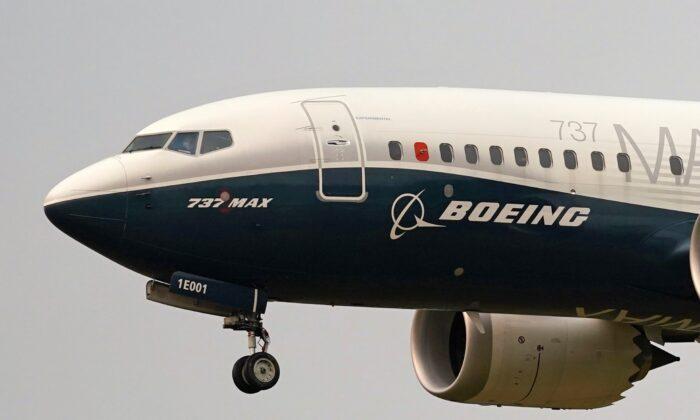Boeing Co. is urging airlines to inspect newer 737 MAX aircraft for a possible loose bolt in a key flight control system after an international operator found a bolt with a missing nut in the rudder and Boeing discovered a similar issue on an undelivered plane, according to federal aviation authorities.
The airplane maker has issued a message to multiple operators urging them to inspect specific tie rods that control rudder movement on newer 737 MAX aircraft and check for possible loose hardware, the Federal Aviation Administration (FAA) said in a Dec. 28 notice.
The rudder is a primary flight control surface found on the vertical stabilizer or fin that controls the left and right movement of an airplane around a vertical axis, known as “yaw.”
More Details
A Boeing spokesperson told The Epoch Times in an emailed statement that the loose bolt identified on the in-service airplane has been fixed and that the inspection notice was issued “out of an abundance of caution.”“We are recommending operators inspect their 737 MAX airplanes and inform us of any findings,” the spokesperson said. “We informed the FAA and our customers and will continue to keep them aware of the progress.”
Boing estimates that the inspection, which involves removing an access panel and visually validating the proper installation of the rudder-control mechanism, will take about two hours per plane.
United Airlines, a major customer of the MAX, said it doesn’t expect the inspections to have any impact on operations.
The FAA said that it’s asking airlines to work through the inspections and provide the agency with information about whether any additional loose hardware has been found and details about how quickly these two-hour inspections can be carried out in practice.
The inspections will help the FAA determine how prevalent the problem is and whether it’s a sign of a larger issue in production quality that could be grounds for the regulator to take further action, Anthony Brickhouse, an air safety expert at Embry-Riddle Aeronautical University, told Reuters.
“Airlines need to take it seriously,” he said. “But as a member of the flying public, I don’t see this as an issue to be concerned about.”

The 737 MAX was grounded for 20 months worldwide after two fatal crashes in 2018 and 2019 killed 346 people in Ethiopia and Indonesia. Boeing is still awaiting certification of its smaller 737 MAX 7 and larger MAX 10.
The FAA has subjected the 737 MAX to close scrutiny following the crashes.
In November 2019, the FAA told Boeing that the agency would be the only issuer of airworthiness certificates, which are necessary for a plane to be entered into service. Before the new rules, Boeing and the FAA had shared the role of issuing the certificates.
In 2021, the FAA said it was tracking all 737 MAX airplanes using satellite data.
Boeing shares were trading 1.2 percent lower at about 1 p.m. EST, though they’re still up around 32 percent year to date.
Other Setbacks
The loose bolt-related mass inspection alert is the latest in a string of setbacks related to the 737 MAX.
In April, for example, deliveries of some 737 MAX models were temporarily halted after Boeing found a problem with certain parts supplied by Spirit AeroSystems.
The problem involved the installation of two fittings that join the aft fuselage made by Spirit AeroSystems to the vertical tail, which weren’t correctly attached to the structure of the fuselage before it was sent to the planemaker.
In August, the FAA warned airlines to limit the use of an anti-icing system on 737 MAX jets in dry air to avoid overheating engine-housing parts, which could potentially cause them to break away from the aircraft and strike a window, posing a hazard to passengers.
Reuters contributed to this report.







